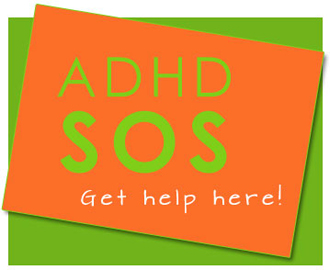What is a Psycho-educational assessment?
A psycho-educational assessment provides estimates of the client’s intellectual, or cognitive, abilities and educational achievement levels. It also yields recommendations relevant for educational planning.
Sources of assessment data include background information, educational history, and records and data from tests of intelligence and educational achievement and, at times, ratings tests of attention, behavior/emotions, and adaptive behavior.
A psycho-educational assessment is designed to answer these questions: Does the client have a learning disability(ies)? Mental retardation? Attention problems? What are the client’s academic and cognitive abilities, strengths, and weaknesses? What are appropriate educational recommendations? Accommodations?
While learning, not emotional problems, is the focus of psycho-educational assessment, behavior/emotional and medical issues may need to be addressed in psycho-educational assessment. Compiling, integrating, and analyzing all assessment data yield educational and other relevant recommendations.
Components of a psycho-educational assessment include:
- Referral question(s)
• Referral source
• Background information
• Assessment procedures
• Relevant test procedures
• Assessment results
• Interpretation of results
• Summary and recommendations
An important part of the psycho-educational assessment is the educational recommendations section. In this section the clinician will make recommendations to help strengthen the areas of weakness. This may include suggestions for accommodations in the academic setting as well as additional support.
Intelligence Tests
Intelligence tests are commonly referred to as IQ tests. The most common IQ tests in current use are the Wechsler intelligence scales and Woodcock-Johnson.
The Wechsler scales yield:
- Full-scale intelligence quotient (IQ): overall, composite measure of intelligence
- Verbal IQ: estimate of verbal comprehension and expression
- Performance IQ: estimate of visual-spatial reasoning.
- In addition, there are supplementary indexes that include measures of Verbal Comprehension, Perceptual Organization, Processing Speed (a measure of information-processing speed), and Working Memory (a measure of short-term memory and attention).
Woodcock Johnson Test also includes supplemental information that includes:
- Auditory processing: discrimination, analysis, and synthesis of auditory stimuli; perception and discrimination of speech sounds despite interfering background noise
- Phonemic awareness: manipulation, analysis, and synthesis of discrete sounds
- Visual processing: (includes visual memory) perception, analysis, and synthesis of visual stimuli; storage and memory of visually presented stimuli; mental manipulation of visual patterns
- Long-term retrieval/memory: storage and retention of information with ability to retrieve it at a later time.
- Short-term memory: processing and holding auditory information in awareness, then manipulating it within a few seconds
- Processing speed: rapid cognitive processing without higher order thinking; attentiveness and fluency of simple information processing
- Verbal reasoning: reasoning and comprehension when using language, verbal expression, vocabulary
- General information/knowledge: acquired knowledge, long-term memory
- Fluid reasoning: inductive and deductive reasoning, problem solving, and concept formation on novel tasks that are nonverbal or limited in language demands
- Quantitative ability: understanding mathematical concepts and relations.
In addition, often implicated in learning disabilities are the areas of auditory processing, phonemic awareness, processing speed, short-term memory, and long-term retrieval. Because traditional IQ tests yield measures of only some of the above abilities, a good psycho-educational assessment should supplement a traditional IQ measure, such as the Wechsler, with additional measures from the Woodcock-Johnson or other batteries.
Educational/Achievement Tests
Educational testing, typically referenced as achievement testing, is an important component of psycho-educational assessment. Assessment of achievement is an important part of assessment to rule out/diagnose learning disabilities and mental retardation. In addition, attention problems are often related to achievement problems. In most cases, poor achievement is what triggers the referral for assessment.
Learning disabilities
Learning disabilities are a pattern of scores representing unevenness in intellectual and academic abilities and skills. While all people have some strengths and weaknesses (e.g., stronger in quantitative than verbal skills), a person with learning disabilities has significant variability in both intellectual/cognitive abilities and related academic variability. The most common example is reading disabilities. These are usually associated with deficits in auditory processing, processing speed, and/or phonemic awareness; but the essential component is unexpectedly weak reading skills.
Federal law defines the seven areas of learning disability as
- basic reading (includes phonetic decoding and sight word recognition)
- reading comprehension
- mathematics calculation
- mathematics reasoning
- written expression(includes basic writing skills, spelling, and composition)
- oral expression
- listening comprehension.
Giftedness
Each state and school district is required to develop and implement a system to identify students that are thought to be gifted and in need of specially designed instruction. Mentally gifted generally includes a person with an IQ score of at least 130, but gifted criteria is not based on IQ score alone.
Dual Exceptionalities
Dual exceptional, also known as twice exceptional applies to students that demonstrate both superior intellectual ability and specific learning problems or attention deficit hyperactivity disorder (ADHD). These students do not fit neatly into the gifted or learning disability category and are often the most challenging for educators. It is important for educators to tend to both the giftedness and the disability.
Mental Retardation
Mental retardation is typically defined as significantly below average intellectual/cognitive functioning (approximately two standard deviations below the mean) and significantly weak adaptive behavior.
Measures of Adaptive Behavior
State and federal laws require that a measure of adaptive behavior (i.e., domestic, daily living, social and functional academic and communication skills) must be obtained in making a diagnosis of mental retardation.
Attention Deficit Hyperactivity Disorder
There is no single test for attention deficit hyperactivity disorder (ADHD). However, there are several behavior ratings and tests of attention; most provide measures of hyperactivity-impulsivity and inattentiveness. Parents and teachers will complete rating scales as part of the assessment. In addition, behavioral observations will be made by the clinician.
Note: Generally, a full scale IQ over 130 is considered gifted and an IQ below 70 may classify as mental retardation but a single IQ score alone does not determine this criteria.
| IQ Classifications in Educational Use
Wechsler, David. Wechsler Adult Intelligence Scale-Third edition Psychological Corporation, 1997 |
|||||
| Classification | IQ Score | Percent Included | |||
| Theoretical Normal Curve | Actual Sample | ||||
| Very Superior | 130 and above | 2.2 | 2.1 | ||
| Superior | 120-129 | 6.7 | 8.3 | ||
| High Average* | 110-119 | 16.1 | 16.1 | ||
| Average | 90-109 | 50.0 | 50.3 | ||
| Low Average* | 80-89 | 16.1 | 14.8 | ||
| Borderline | 70-79 | 6.7 | 6.5 | ||
| Extremely Low* ** | 69 and below | 2.2 | 1.9 | ||
Source: Keys to effective LD practice, University of Tennessee



 If your child suffers from shyness, they are not alone. Recent research suggests that over 50% of the general population currently experiences some degree of shyness in their lives. Many children are shy in situations that are new to them. It can be painful if it continues to adolescence and beyond preventing them from participating fully in most social settings. Being shy is not necessarily a problem, unless it causes distress. Luckily, there are many strategies and options to help overcome shyness.
If your child suffers from shyness, they are not alone. Recent research suggests that over 50% of the general population currently experiences some degree of shyness in their lives. Many children are shy in situations that are new to them. It can be painful if it continues to adolescence and beyond preventing them from participating fully in most social settings. Being shy is not necessarily a problem, unless it causes distress. Luckily, there are many strategies and options to help overcome shyness. It used to be that after graduating from college, young adults would set out to create a nest of their own. Today, however, some 30% of young adults move back in with their parents—a higher proportion than any time since the 1950s.
It used to be that after graduating from college, young adults would set out to create a nest of their own. Today, however, some 30% of young adults move back in with their parents—a higher proportion than any time since the 1950s.

